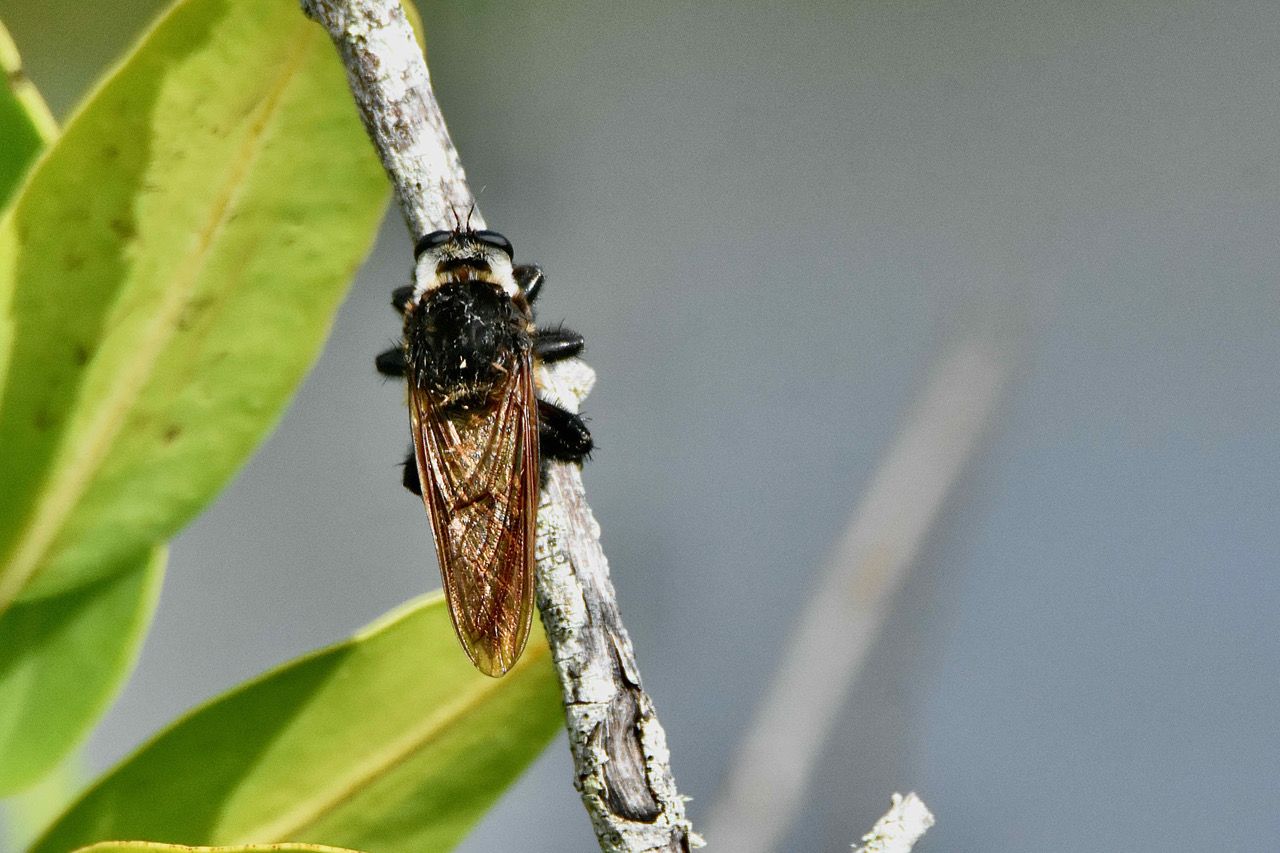
Florida bee killer, photographed at Merritt Island National Wildlife Refuge, Melbourne, Brevard County, in October 2018.
If you can imagine crossing a locust with a bumble bee, you might get something that looks this: a Florida bee killer, Mallophora bomboides. It has the fuzz and coloring of a bumble bee and the long, translucent wings and body of a locust.
Its name, however, leaves no doubt as to how it makes its living: killing and eating bees and wasps. It's not to be confused with killer bees. In fact, our guy might have a killer bee for lunch if it had the chance
Florida bee killers are one of about 60 species of Mallophora found worldwide and one of 20 species of bee killers found throughout the southeastern United States. Four of these are found in Florida (some say that one might be a variant of our guy rather than a separate species.)
Florida bee killers are found in North Carolina, South Carolina, Georgia, Alabama, Mississippi as well as Florida. In the Sunshine State, it’s mostly found in the Peninsula as far south as Martin and Palm Beach counties.
It not only resembles bumble bees, it mimics bumble bees from the way they fly to the sounds they makes. Comes in handy when you want to catch and eat one. In fact, Florida bee killers are able to mimic all five species of bumble bees found in the Sunshine State.
All of Florida’s bee killers are fuzzy with a mix of brown, yellow or white patches. Florida bee killers have more white than the others.
As might be expected, Florida bee killers tend to be found near apiaries, or places where there are beehives. They’ll perch on tall grass, a branch of a shrub, as shown in the photo above, waiting to pounce on a hapless bee. Honey bees tend to make up most of their diet, but they’ll also eat bumble bees, carpenter bees and paper wasps. They're active, or in flight, April into December, but mostly summer into fall.
They’re not believed to be threats to destroy whole hives, however.
Female Florida bee killers deposit their eggs in the ground, but not much is known about how the larvae develop or what they eat. Some bee killer larvae are known to be parasites of beetle larvae.
Florida bee killers are members of Asilidae, the robber fly, or assassin fly family.
